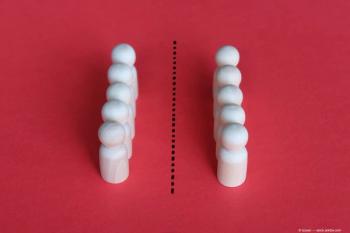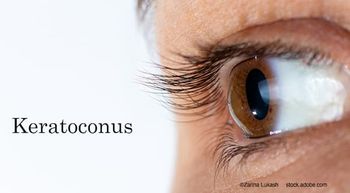
Dry age-related macular degeneration measurements sought
Novel strategies have been developed to track the progression of dry age-related macular degeneration by monitoring the change in geographic atrophy and drusen using spectral-domain optical coherence tomography.
"Success in the treatment of dry AMD will be defined by preventing normal disease progression from intermediate high-risk dry AMD," said Dr. Rosenfeld, professor of ophthalmology, Bascom Palmer Eye Institute, University of Miami Miller School of Medicine, Miami. "This normal disease progression includes the enlargement of geographic atrophy and formation of choroidal neovascularization (CNV).
"These new treatments are desperately needed to preserve vision in patients with dry AMD, but also to maintain the benefits achieved from the use of anti-vascular endothelial growth factor drugs in wet AMD," he added. "We now convert the wet AMD to dry AMD with these drugs, but over time, these patients go on to lose vision gradually from the ravages of the underlying dry AMD."
"In the near future, success will be defined by the preservation of vision," he said. "Perhaps in the far future, we can talk about restoring vision."
Using visual acuity as a clinical trial endpoint is unrealistic because visual loss takes years in AMD, he explained. In addition, vision loss may not be correlated with disease progression and loss of central vision depends on the proximity of the geographic atrophy to the center of the fovea.
"We need a surrogate endpoint that will predict future vision loss," Dr. Rosenfeld said. Specifically, in the short term, the endpoint needs to represent a slowing of disease progression, and in the long term, the endpoint needs to be correlated with vision loss. Glaucoma researchers are familiar with this predicament and that's why they use IOP measurements, the loss of visual field, and the ganglion cell layer as surrogates for vision loss in clinical trials.
"In dry AMD, likely surrogate endpoints include the progression of dry to wet AMD, but [studies designed] with this endpoint would take many years to complete," he said. "It is more realistic to look at the growth of geographic atrophy and decreasing the drusen burden without formation of geographic atrophy or CNV."
Geographic atrophy
Color fundus photography was once the best way to visualize geographic atrophy, but now autofluorescence, fluorescein angiography, and OCT can do an excellent job. Dr. Rosenfeld and colleagues have confirmed the results of others (i.e., the growth of geographic atrophy depends on the size of the lesion at baseline). However, the increasing growth rate of lesions as the lesions grow larger is a problem when designing clinical trials, he noted.
"If the growth rate depends on the size of the lesion, as they grow larger they grow faster and faster," he said. "It is very difficult to design clinical trials when the growth rate of the lesions is constantly changing."
In light of this, Dr. Rosenfeld and colleagues worked on a solution. They took the square root of the area of the geographic atrophy lesions and looked at the difference in the square roots. They found that the dependence of growth rate on the size of the lesions vanished.
"We believe this is because we took the square root of the area measurements and effectively linearized the difference measurements in these lesions," he said. "This manipulation would be analogous to looking at the differences in the radii of lesions if the lesion areas could be configured into a circle. Of course, the areas of geographic atrophy are not always circles, but it's a simplistic way of understanding why our approach works.
"Rather than comparing lesions that grow exponentially as a square of the radius, we can now show that growth rates are fairly uniform across lesions," he added. "This square root transformation eliminates dependence on the baseline lesion size."
Dr. Rosenfeld and colleagues applied their idea to the data from the Othera study and the Age-Related Eye Disease Study and found the same result.
"We think that this is going to be a useful strategy in clinical trials because geographic atrophy is an excellent surrogate endpoint and is correlated with the loss of photoreceptors and retinal pigment epithelium," he said.
In addition, this transformation strategy allows us to run smaller studies over shorter periods. The authors published their findings in Ophthalmology (2011;118:679-686).
Newsletter
Don’t miss out—get Ophthalmology Times updates on the latest clinical advancements and expert interviews, straight to your inbox.


















































.png)


